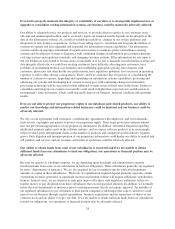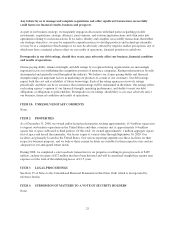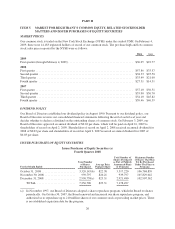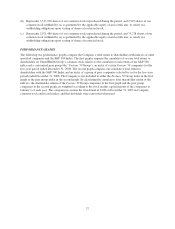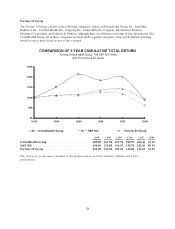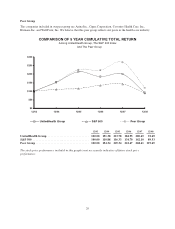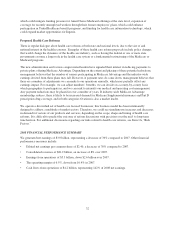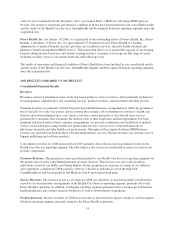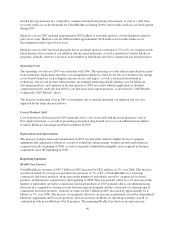United Healthcare 2008 Annual Report Download - page 42
Download and view the complete annual report
Please find page 42 of the 2008 United Healthcare annual report below. You can navigate through the pages in the report by either clicking on the pages listed below, or by using the keyword search tool below to find specific information within the annual report.which could mitigate funding pressure for AmeriChoice Medicaid offerings at the state level, expansion of
coverage for recently unemployed workers through their former employers’ plans, which could enhance
participation in UnitedHealthcare benefit programs, and funding for health care information technology, which
could expand market opportunities for Ingenix.
Proposed Health Care Reforms
There is regular dialogue about health care reforms at both state and national levels, due to the size of and
national interest in the health economy. Examples of these health care reform proposals include policy changes
that would change the dynamics of the health care industry, such as having the federal or one or more state
governments assume a larger role in the health care system or a fundamental restructuring of the Medicare or
Medicaid programs.
The new administration and various congressional leaders have signaled their interest in reducing payments to
private plans offering Medicare Advantage. Depending on the extent and phasing of these potential reductions,
management believes that the number of seniors participating in Medicare Advantage and the industry-wide
earnings derived from these plans may fall. However, if payment rates do come down, management believes that
there are a number of adjustments we can make to our operations annually, which may partially offset any
earnings impact. For example, we can adjust members’ benefits, we can decide on a county-by-county basis
which geographies to participate in, and we can seek to intensify our medical and operating cost management.
Any payment reductions may be phased in over a number of years. If industry-wide Medicare Advantage
membership reduces, there is likely to be increased demand for Medicare Supplemental insurance and Part D
prescription drug coverage, and in both categories Ovations is also a market leader.
We operate a diversified set of health care focused businesses; this business model has been intentionally
designed to address a multitude of market sectors. Therefore, we could see simultaneous increases and decreases
in demand for various of our products and services, depending on the scope, shape and timing of health care
reforms. It is difficult to predict the outcome of reform discussions with precision over the mid- to long-term
time horizon. For additional discussions regarding our risks related to health care reforms, see Item 1A, “Risk
Factors.”
2008 FINANCIAL PERFORMANCE SUMMARY
We generated net earnings of $3.0 billion, representing a decrease of 36% compared to 2007. Other financial
performance measures include:
• Diluted net earnings per common share of $2.40, a decrease of 30% compared to 2007.
• Consolidated revenues of $81.2 billion, an increase of 8% over 2007.
• Earnings from operations of $5.3 billion, down $2.6 billion over 2007.
• The operating margin of 6.5%, down from 10.4% in 2007.
• Cash flows from operations of $4.2 billion, representing 142% of 2008 net earnings.
32




